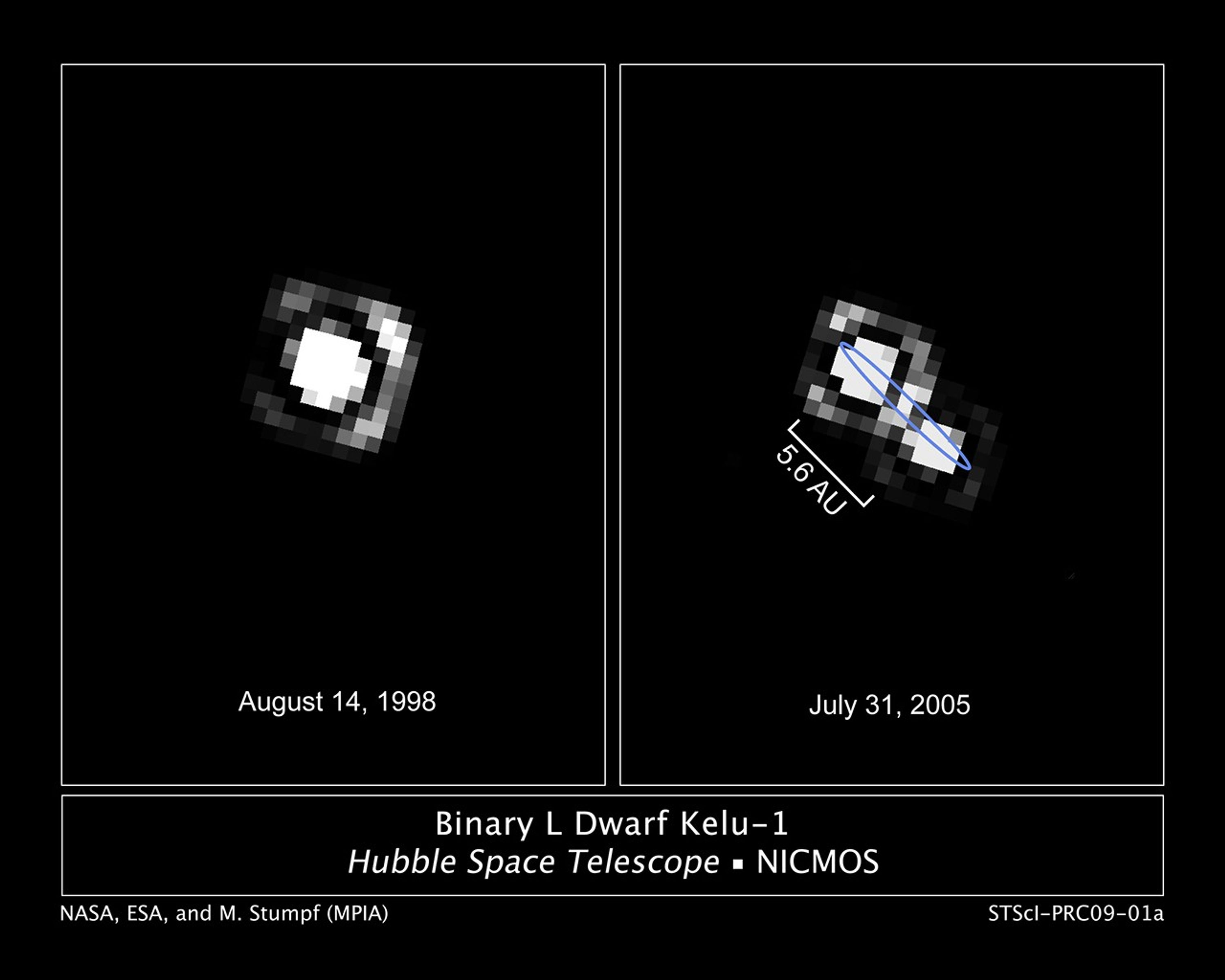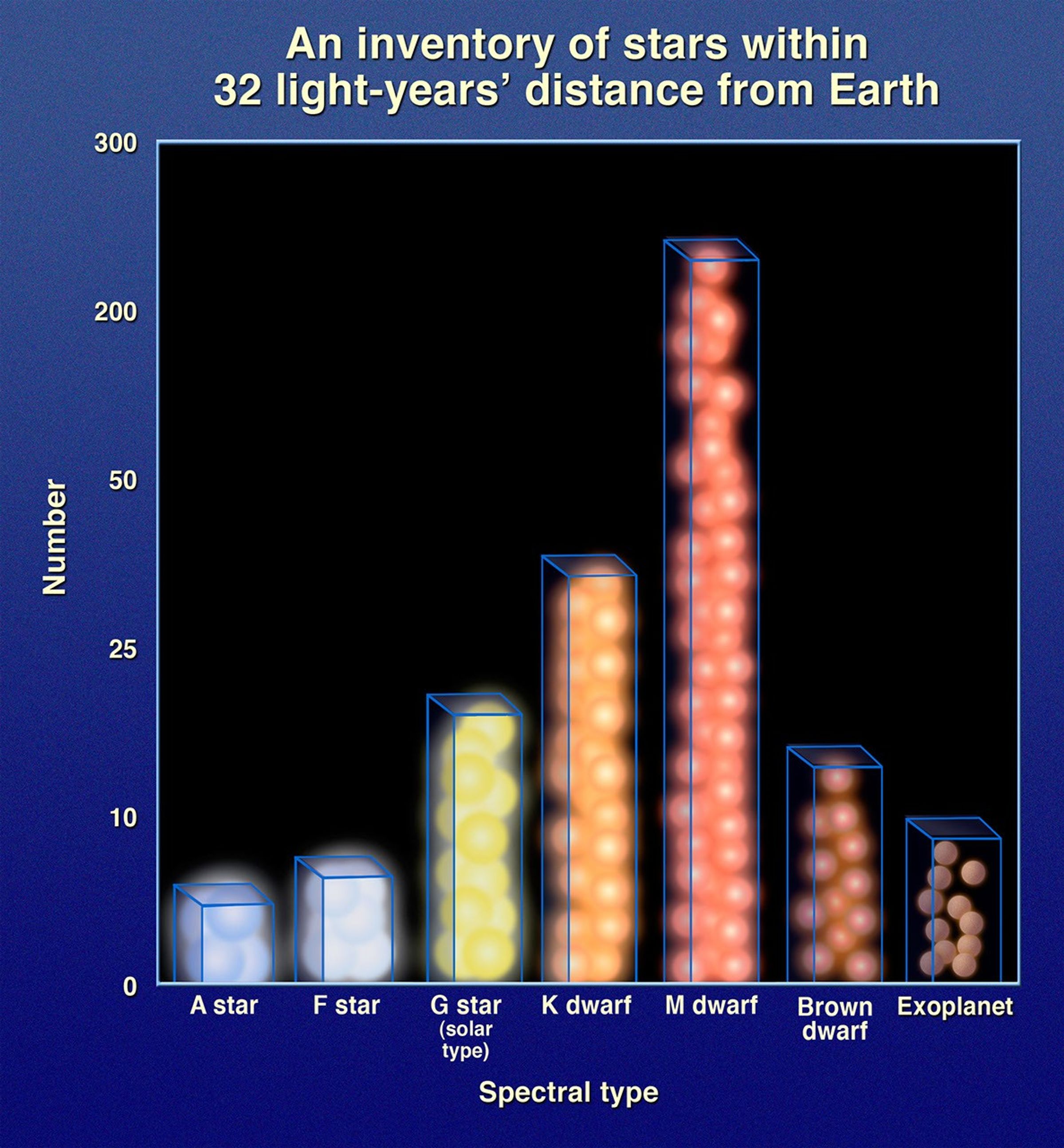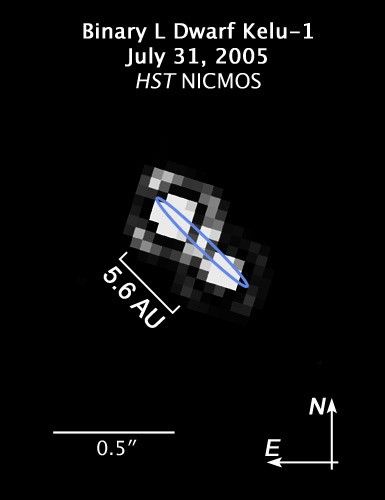1 min read
Binary Brown Dwarf Kelu-1

This pair of NASA Hubble Space Telescope images of the binary brown dwarf Kelu-1 trace the orbital motion of the two stars over a seven-year span as photographed by the Near Infrared Camera and Multi-Object Spectrometer (NICMOS) on Hubble.
In 1998, the "stars" were too close together to be resolved by Hubble. By 2005, they had moved apart to a separation of 520 million miles. The projected maximum separation is 550 million miles.
Binary systems allow astronomers to estimate the mass of companion objects. The brown dwarfs are 61 and 50 times the mass of Jupiter. They are therefore too small to burn as stars, but too large to have formed as planets. Based on the total estimated mass of the system, astronomers suspect there is a third brown dwarf member that has not yet been resolved.
About the Object
- R.A. PositionR.A. PositionRight ascension – analogous to longitude – is one component of an object's position.13h 5m 40.18s
- Dec. PositionDec. PositionDeclination – analogous to latitude – is one component of an object's position.-25° 41' 6.0"
- ConstellationConstellationOne of 88 recognized regions of the celestial sphere in which the object appears.Centaurus
- DistanceDistanceThe physical distance from Earth to the astronomical object. Distances within our solar system are usually measured in Astronomical Units (AU). Distances between stars are usually measured in light-years. Interstellar distances can also be measured in parsecs.61 light-years (18.7 parsecs)
About the Data
- Data DescriptionData DescriptionProposal: A description of the observations, their scientific justification, and the links to the data available in the science archive.
Science Team: The astronomers who planned the observations and analyzed the data. "PI" refers to the Principal Investigator.This image was created from HST data from proposals 7952: E. Martin (Institute for Astrophysics, Canary Islands) and G. Basri (University of California, Berkeley); and 10208: W. Brandner, E. Masciadri, and V. Joergens (Max-Planck-Institute for Astronomy, Heidelberg), R. Koehler (Heidelberg-Königstuhl State Observatory, Heidelberg), M. Kasper (European Southern Observatory, Germany), and H. Bouy (Institute for Astrophysics, Canary Islands). M. Stumpf, of the Max-Planck-Institute for Astronomy in Heidelberg, is also on the science team. - InstrumentInstrumentThe science instrument used to produce the data.HST>NICMOS
- Exposure DatesExposure DatesThe date(s) that the telescope made its observations and the total exposure time.August 14, 1998 and July 31, 2005
- Object NameObject NameA name or catalog number that astronomers use to identify an astronomical object.Kelu-1 AB, Kelu
- Object DescriptionObject DescriptionThe type of astronomical object.Binary Brown Dwarf System
- Release DateJanuary 5, 2009
- Science ReleaseBrown Dwarfs Don’t Hang Out With Stars
- Credit

Related Images & Videos

Graphic of Number of Stars vs. Spectral Type within 32 light-years of Earth
This diagram shows the various stellar populations within 32 light-years of Earth as measured by the RECONS survey. The largest population consists of red dwarfs, but the population of slightly lower mass brown dwarfs drops off precipitously. This is known as the "brown dwarf...
Share
Details
Claire Andreoli
NASA’s Goddard Space Flight Center
Greenbelt, Maryland
claire.andreoli@nasa.gov


































